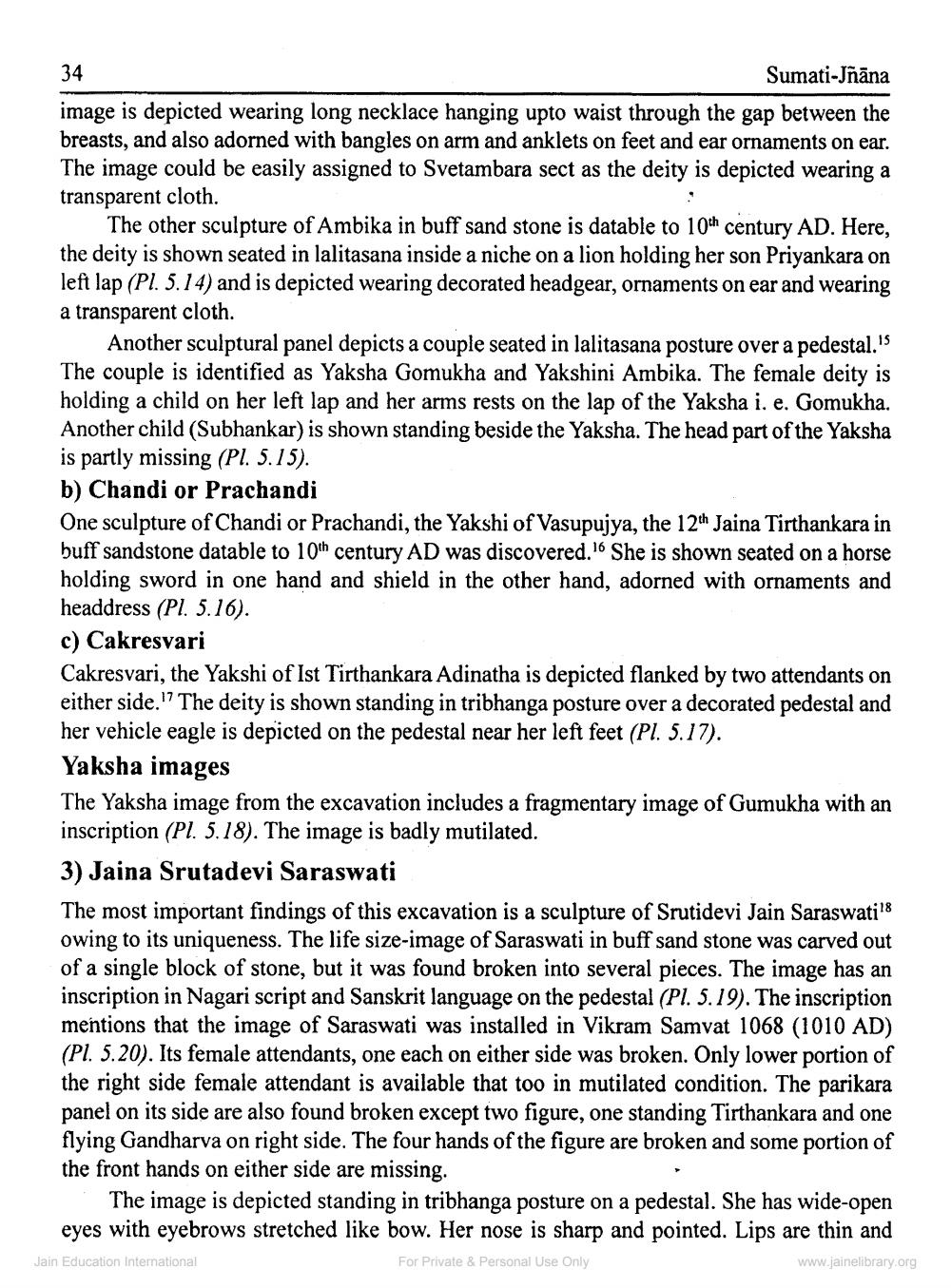________________
Sumati-ñāna
image is depicted wearing long necklace hanging upto waist through the gap between the breasts, and also adorned with bangles on arm and anklets on feet and ear ornaments on ear. The image could be easily assigned to Svetambara sect as the deity is depicted wearing a transparent cloth.
The other sculpture of Ambika in buff sand stone is datable to 10th century AD. Here, the deity is shown seated in lalitasana inside a niche on a lion holding her son Priyankara on left lap (Pl. 5.14) and is depicted wearing decorated headgear, ornaments on ear and wearing a transparent cloth.
Another sculptural panel depicts a couple seated in lalitasana posture over a pedestal." The couple is identified as Yaksha Gomukha and Yakshini Ambika. The female deity is holding a child on her left lap and her arms rests on the lap of the Yaksha i. e. Gomukha. Another child (Subhankar) is shown standing beside the Yaksha. The head part of the Yaksha is partly missing (Pl. 5.15). b) Chandi or Prachandi One sculpture of Chandi or Prachandi, the Yakshi of Vasupujya, the 12th Jaina Tirthankara in buff sandstone datable to 10th century AD was discovered. She is shown seated on a horse holding sword in one hand and shield in the other hand, adorned with ornaments and headdress (Pl. 5.16). c) Cakresvari Cakresvari, the Yakshi of Ist Tirthankara Adinatha is depicted flanked by two attendants on either side. The deity is shown standing in tribhanga posture over a decorated pedestal and her vehicle eagle is depicted on the pedestal near her left feet (Pl. 5.17). Yaksha images The Yaksha image from the excavation includes a fragmentary image of Gumukha with an inscription (Pl. 5.18). The image is badly mutilated. 3) Jaina Srutadevi Saraswati The most important findings of this excavation is a sculpture of Srutidevi Jain Saraswati 8 owing to its uniqueness. The life size-image of Saraswati in buff sand stone was carved out of a single block of stone, but it was found broken into several pieces. The image has an inscription in Nagari script and Sanskrit language on the pedestal (Pl. 5.19). The inscription mentions that the image of Saraswati was installed in Vikram Samvat 1068 (1010 AD) (Pl. 5.20). Its female attendants, one each on either side was broken. Only lower portion of the right side female attendant is available that too in mutilated condition. The parikara panel on its side are also found broken except two figure, one standing Tirthankara and one flying Gandharva on right side. The four hands of the figure are broken and some portion of the front hands on either side are missing.
. The image is depicted standing in tribhanga posture on a pedestal. She has wide-open
eyes with eyebrows stretched like bow. Her nose is sharp and pointed. Lips are thin and Jain Education International For Private & Personal Use Only
www.jainelibrary.org




